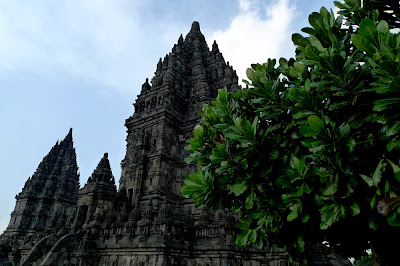Every single traveler who has decided to land their feet in Jogja has ONE destination in mind and that is none other than Borobudur. In fact, the interest to explore this ancient marvel are equal to that of Angkor Wat recently. Not difficult to guess why. Avid photographers has been taking impossibly beautiful pictures of this temple that it almost seems surreal that this place existed on earth. Its almost heaven-like.
So to begin my blog on Borobudur, I would like to talk about where to stay. Although all the brochures or website that talk about Borobudur tells you it is located in Jogjakarta, actually more accurately, Borobudur is located in Magelang. Magelang is about 1 hour away from Jogja town. Although this is consider to be pretty much in the same town, it will be highly inconvenient to stay in Jogja town if you want to catch the sunrise in Borobudur and may I tell you that you MUST ABSOLUTELY go catch the sunrise in Borobudur.
And so I would like to introduce to you the Hotel Manohara Borobudur. Hotel Manohara is conveniently located inside the Borobudur Archeological Park. Borobudur is practically located at the backyard of Manohara! So if you would like to catch the sunrise in Borobudur, you can wake up at 5am and walk to the top tier of the temple within 15 minutes (unless you are a slow stair climber). Now this is very useful because if you stay out of Magelang, you will probably need to wake up at 3.30am in the middle of the night and beg a double charge cab driver to fetch you to Borobudur. If you stay more than 2 nights in your trip, you can at least book in for 1 or 2 nights for the pure convenience.
Manohara is also the centre for Borobudur study. There is a resource centre where you can find a lot of books on the temple. In the room, we can sit and enjoy a full AV show on the television as one of its in house channel from the history of Borobudur to what does the 1460 relics means. It simply is the wisest choice to stay.
 |
| A snap shots collage of the hotel by Sam Hor. |
Location : Java, Indonesia
Next, Sunrise in Borobudur







































